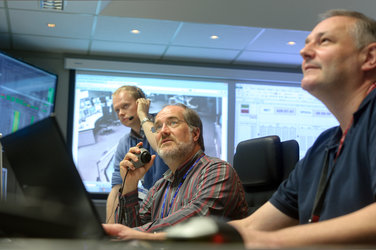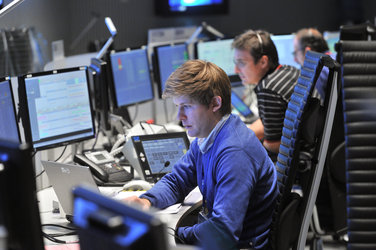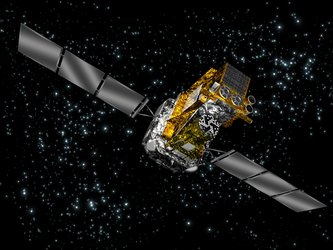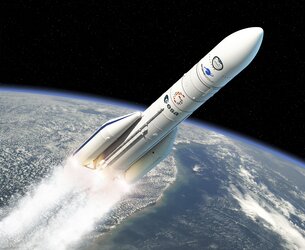Accept all cookies Accept only essential cookies See our Cookie Notice

About ESA
The European Space Agency (ESA) is Europe’s gateway to space. Its mission is to shape the development of Europe’s space capability and ensure that investment in space continues to deliver benefits to the citizens of Europe and the world.
Highlights
ESA - United space in Europe
This is ESA ESA facts Member States & Cooperating States Funding Director General Top management For Member State Delegations European vision European Space Policy ESA & EU Responsibility & Sustainability Annual Report Calendar of meetings Corporate newsEstablishments & sites
ESA Headquarters ESA ESTEC ESA ESOC ESA ESRIN ESA EAC ESA ESAC Europe's Spaceport ESA ESEC ESA ECSAT Brussels Office Washington OfficeWorking with ESA
Business with ESA ESA Commercialisation Gateway Law at ESA Careers Cyber resilience at ESA IT at ESA Newsroom Partnerships Merchandising Licence Education Open Space Innovation Platform Integrity and Reporting Administrative Tribunal Health and SafetyMore about ESA
History ESA Historical Archives Exhibitions Publications Art & Culture ESA Merchandise Kids Diversity ESA Brand Centre ESA ChampionsLatest
Space in Member States
Find out more about space activities in our 23 Member States, and understand how ESA works together with their national agencies, institutions and organisations.
Science & Exploration
Exploring our Solar System and unlocking the secrets of the Universe
Go to topicAstronauts
Missions
Juice Euclid Webb Solar Orbiter BepiColombo Gaia ExoMars Cheops Exoplanet missions More missionsActivities
International Space Station Orion service module Gateway Concordia Caves & Pangaea BenefitsLatest
Space Safety
Protecting life and infrastructure on Earth and in orbit
Go to topicAsteroids
Asteroids and Planetary Defence Asteroid danger explained Flyeye telescope: asteroid detection Hera mission: asteroid deflection Near-Earth Object Coordination CentreSpace junk
About space debris Space debris by the numbers Space Environment Report In space refuelling, refurbishing and removingSafety from space
Clean Space ecodesign Zero Debris Technologies Space for Earth Supporting Sustainable DevelopmentLatest
Applications
Using space to benefit citizens and meet future challenges on Earth
Go to topicObserving the Earth
Observing the Earth Future EO Copernicus Meteorology Space for our climate Satellite missionsCommercialisation
ESA Commercialisation Gateway Open Space Innovation Platform Business Incubation ESA Space SolutionsLatest
Enabling & Support
Making space accessible and developing the technologies for the future
Go to topicBuilding missions
Space Engineering and Technology Test centre Laboratories Concurrent Design Facility Preparing for the future Shaping the Future Discovery and Preparation Advanced Concepts TeamSpace transportation
Space Transportation Ariane Vega Space Rider Future space transportation Boost! Europe's Spaceport Launches from Europe's Spaceport from 2012Latest

Training the Gaia team
Thank you for liking
You have already liked this page, you can only like it once!
For months, the 60-plus engineers of the Gaia control team have been intensively simulating every aspect of the spacecraft’s initial journey to the L2 Lagrange point, 1.5 million km from Earth.
The training – often running through a full 12-hour shift – is conducted ‘on console’ in the Main Control Room at ESOC, ESA’s Operations Centre in Darmstadt, Germany.
In a ‘Sim’, engineers use the actual mission control system to operate and fly a faithful software replication of the real Gaia that responds to their commands just as the real one will.
“While it may appear like a big video game, the training is far more complex and demanding and meant to be so,” says ESA’s Michael Gabel, responsible for training at ESOC. “We ensure that the teams can react quickly to any contingency.”
The training is overseen by a little-known team of ESA and industry specialists who work in an access-limited ‘Sim Room’ underneath the main room.
The trainers inject a carefully staged series of faults, errors and failures into the spacecraft or into the software and systems used to fly it.
Upstairs, under the watchful eye of the senior Flight Director, the controllers sitting on console must recognise and assess the problem and apply the correct contingency procedure.
Earlier in the campaign, the faults were simpler in nature. “But today, closer to actual launch, we’re simulating Gaia’s arrival at the L2 orbital position,” says Joe Bush, from Telespazio Vega Deutschland and responsible for Gaia simulations.
“Just like ‘LEOP’ – the Launch and Early Orbit Phase – this is one of the most critical phases of the mission and demands a complex series of manoeuvres. We’re injecting multiple, complex faults; we really try to stress the control team to see if they know their stuff. And the solutions require them to work together as a team.”
LEOP includes separation from the launcher, deployment of the solar panels and acquisition of first signals from the satellite.
“If something’s going to go wrong in a mission, one of the likely times is during LEOP, or during a manoeuvre like arrival at L2, where the impact can be more critical. Our job is to ensure the mission controllers are ready for anything,” says Michael.
Gaia is set for launch from Kourou on 20 November 2013, and will arrive at L2 some 21 days later.
More information:
-
CREDIT
Telespazio VEGA Deutschland GmbH/J. Mai -
LICENCE
ESA Standard Licence

Training the Gaia team

Gaia mission team in training

XMM team training

Gaia avionics model















 Germany
Germany
 Austria
Austria
 Belgium
Belgium
 Denmark
Denmark
 Spain
Spain
 Estonia
Estonia
 Finland
Finland
 France
France
 Greece
Greece
 Hungary
Hungary
 Ireland
Ireland
 Italy
Italy
 Luxembourg
Luxembourg
 Norway
Norway
 The Netherlands
The Netherlands
 Poland
Poland
 Portugal
Portugal
 Czechia
Czechia
 Romania
Romania
 United Kingdom
United Kingdom
 Slovenia
Slovenia
 Sweden
Sweden
 Switzerland
Switzerland























